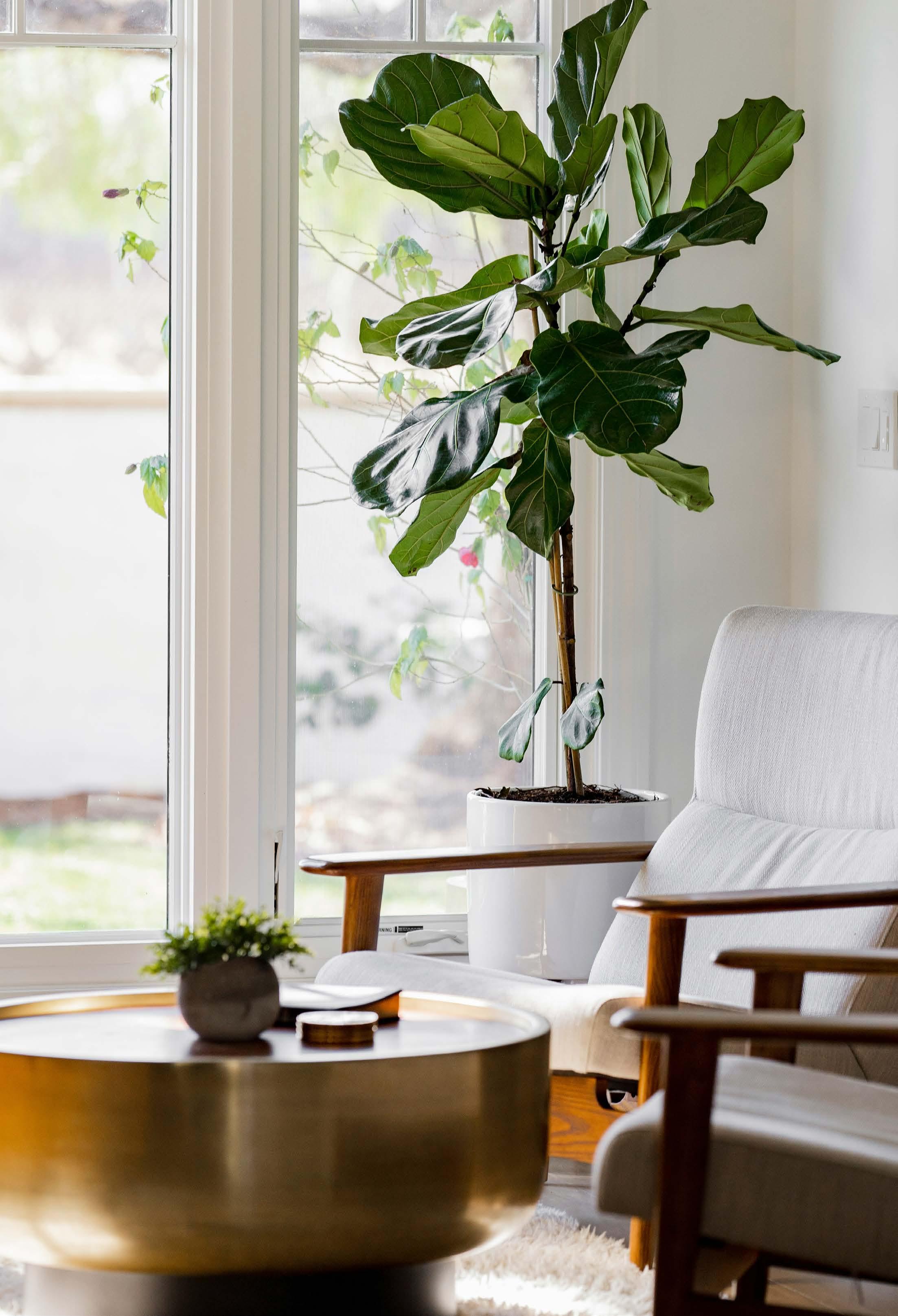

WELCOME TO THE July 2025
P u B l ISHER
Century 21 Australia Pty Ltd
CONTRIB u TORS
Cotality
Chris Gray
EDITORIA l ENQ u IRIES
Century 21 Australia (02) 8295 0600
ADVERTISING ENQ u IRIES
Century 21 Australia (02) 8295 0600
DISC l AIMER
We have in preparing this information used our best endeavours to ensure that the information contained therein is true and accurate, but accept no responsibility and disclaim all liability in respect of any errors, inaccuracies or misstatements contained herein. Prospective buyers and sellers should make their own enquiries to verify the information contained herein. All information contained in the CENTURY 21 Australia Pty Ltd website is provided as a convenience to clients. All links to property prices displayed on the website are current at the time of issue, but may change at any time and are subject to availability.
For more information on our Privacy Policy please refer to: www.century21.com.au/privacy
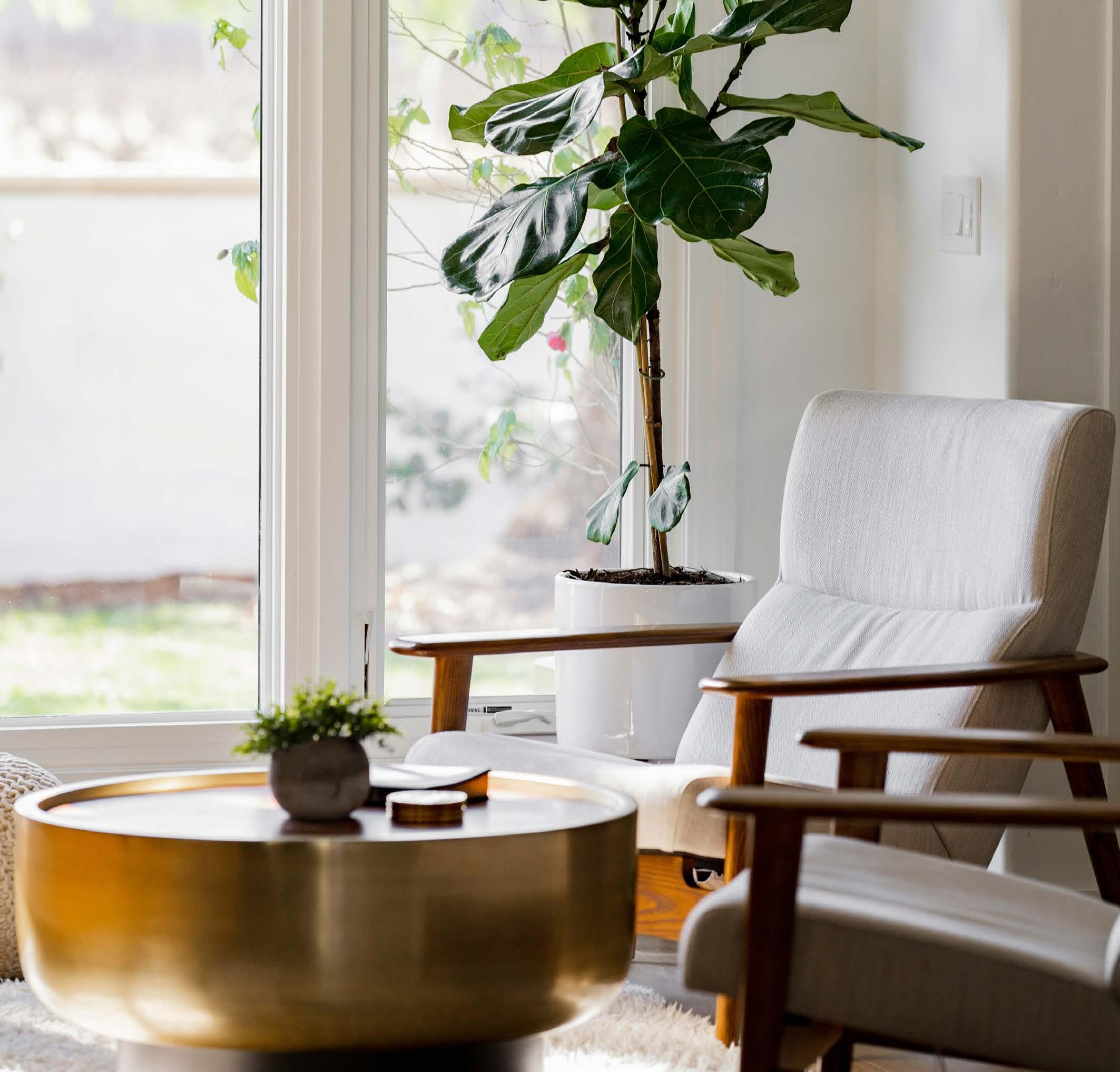
FA ll ING INTEREST RATES DRIVE AN ACCE l ERATION OF GROWTH IN HO u SING
VA lu ES THRO u GH Q2

BY COTALITY
Australian housing values rose by 0.6% in June, marking a fifth straight month of growth following the -0.3% dip seen between November and January.
Monthly gains were recorded across almost every broad region of Australia, with Hobart (-0.2%), the only capital city or rest-of-state region to see a month-on-month fall.
The June quarter saw national home values rise by 1.4%, following a 0.9% lift through the first quarter of the year and a -0.1% decline in Q4 last year. Except for Regional Tasmania (-0.4%), every capital city and rest-of-state region recorded a rise in values through the quarter.
Cotality’s research director, Tim Lawless, says falling interest rates have been a clear catalyst behind the renewed momentum.
“The first rate cut in February was a clear turning point for housing value trends. An additional cut in May, and growing certainty of more cuts later in the year have further fuelled positive housing sentiment, pushing values higher.”
“Although value rises have been broad-based, the pace of growth remains mild compared to mid-2023
when the quarterly rate of growth in national home values peaked at 3.3%, and for that matter, positively tepid relative to the extreme 8.1% quarterly peak growth recorded through the height of the pandemic.”
However, the current housing rebound is occurring against a backdrop of relatively low home sales. Housing turnover through the first half of the year, based on estimates of sales and total dwelling stock, is tracking at an annualised pace of 4.9%, slightly below the decade-average turnover of 5.1%.
From a supply perspective, advertised stock levels are also low, tracking -5.8% below the same time a year ago (based on data for the four weeks ending June 29th) and -16.7% below the previous five-year average.
“Although demonstrated demand is tracking slightly below average, advertised supply is scarce, creating a more balanced market for buyers and selle rs.”
“Improve d selling conditions can be seen in auction clearance rates, which have risen to slightly above the decade average in the last two weeks of June, holding around the mid 60% range.”
Underneath the headline results, the combined capital cities have posted a stronger monthly growth outcome relative to the combined regional areas of Australia for a second consecutive month, following a period of outperformance across regional Australia.
Although the quarterly pace of growth still favours regional Australia, at 1.6%, compared with the combined capitals at 1.4%, it is looking increasingly likely that the quarterly growth trend will once again favour capital city markets over the coming months.
Across the individual capitals, quarterly growth was led by Darwin, with dwelling values jumping 4.9%. Darwin’s 1.5% rise through June was enough to t ake dwelling values to a
Image:
Rilla Paris on Unsplash

new rec ord high, finally surpassing the mining boom peak recorded just over eleven years ago in May 2014.
Outside of Darwin, the quarterly trend across the capitals was led by Perth (+2.1%) and Brisbane (+2.0%), the same markets which have led the five-year growth trend, with values up 81.1% and 75.1% respectively since June 2020.
At 3.4%, the financial year change in national home values looks to be moving through a low point, but, given the re-acceleration in growth trends over the past five months, is likely to gradually rise through the second half of the year.
Annualising quarterly change implies a national annual growth rate
of 5.8%, which is slightly above the decade average annual rate of 5.2%.
“Given the upside risk that housing values will accelerate further from here as interest rates reduce, the reality is we will likely see home values rise by more than this over the coming 12 months,” said Mr Lawless.
“However, despite the prospect for lower interest rates, affordability constraints will likely temper the extent of a housing market upswing.”

W H y WAITING FOR A RATE C u T
CO ul D COST yO u
10-20% MORE

BY CHRIS GRAY, CEO, YOUR EMPIRE
When the Reserve Bank of Australia surprised many by holding the cash rate steady instead of cutting it last week, plenty of buyers let out a sigh. After months of hoping for lower mortgage repayments, that long-anticipated rate cut didn’t arrive. But here’s the thing: whether the RBA cuts next month or next quarter doesn’t really matter if you understand how the market truly works.
WAITING FOR THE HERD VS. ACTING EARLY
Most buyers wait for official news – the big headline that rates have dropped, that money’s cheap again, that the worst is over. When they see that headline, consumer sentiment shifts overnight. Suddenly everyone is back at open homes, bidding at auctions, and stretching their budget just that little bit more. And that’s when prices move – fast.
What many forget is that the smart investors are always a step ahead. They know the real opportunity is before the first cut. Once the RBA signals the tide has turned, the competition floods back in and prices can jump 10%–20% in a matter of months. That means buyers who wait for certainty end up paying tomorrow’s prices, not today’s.
WINTER: THE QUIET ADVANTAGE
Now add winter into the mix. This time of year is already one of the quietest for property, especially in blue-chip suburbs. Continued over page
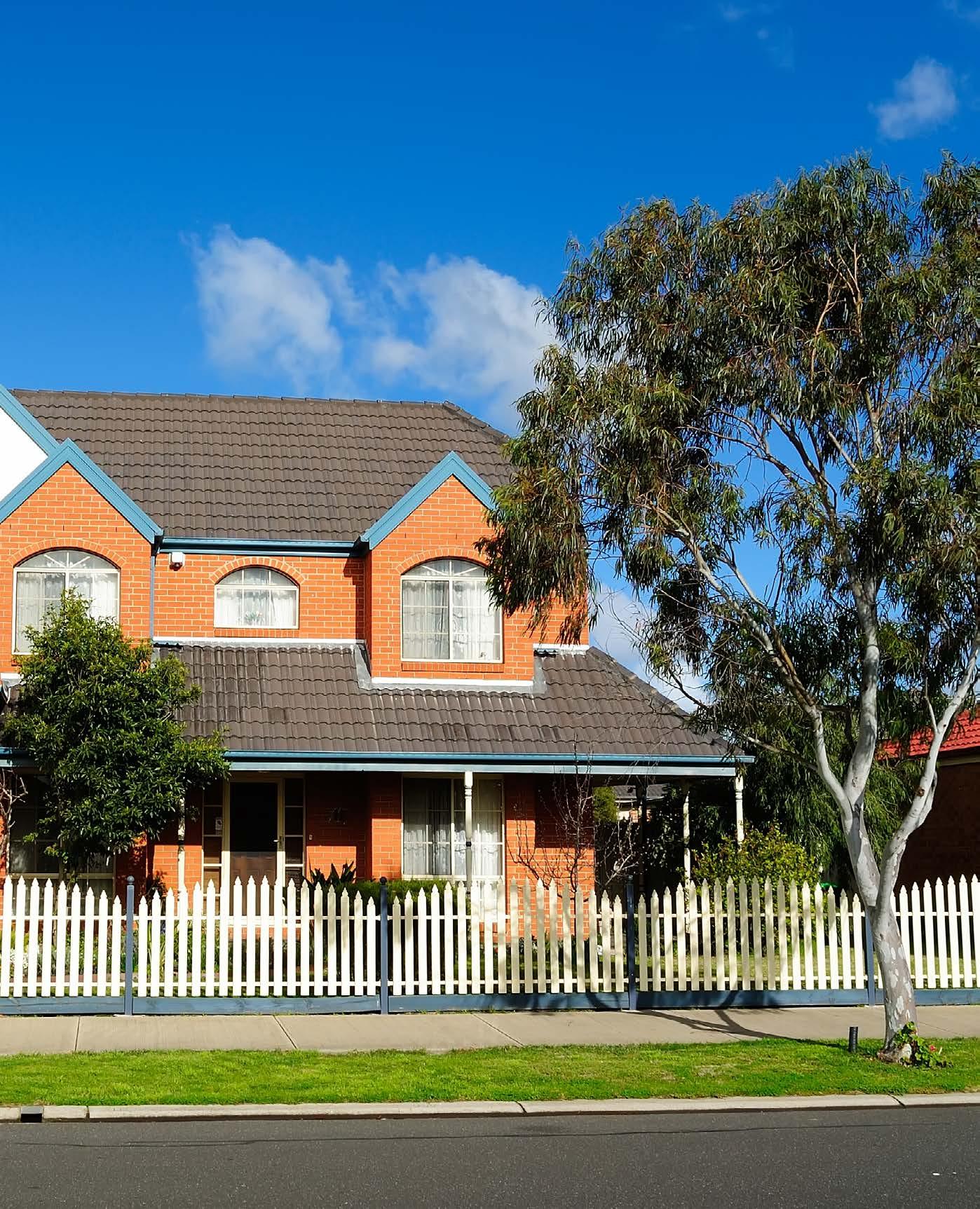
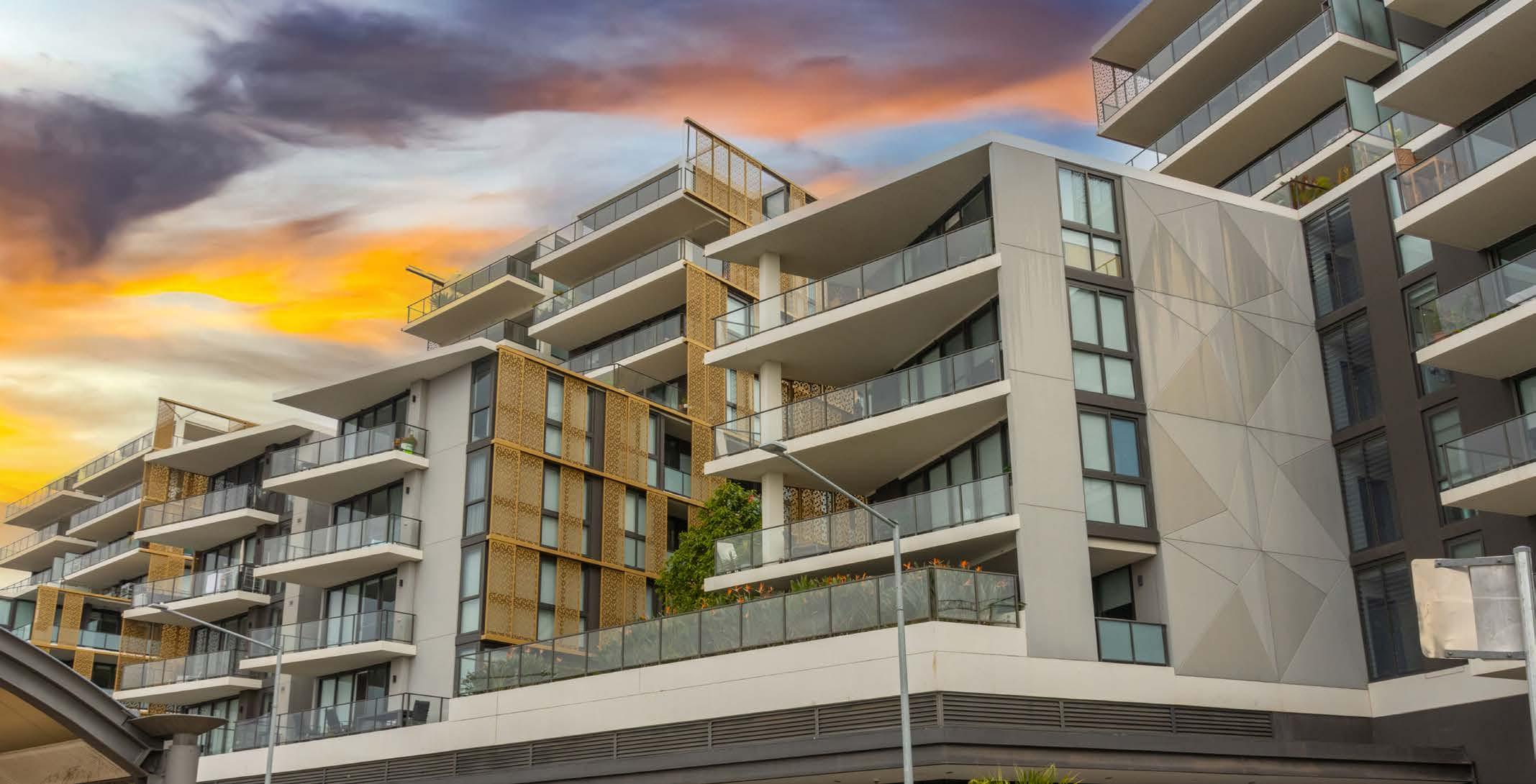
Continued from previous
Many homeowners have jetted off to Europe chasing the sun. Listings drop. Auctions thin out. Yet motivated sellers remain – some hit by higher repayments, others feeling the squeeze of the cost-of-living crunch.
With fewer active buyers on the ground, there’s less competition. Sellers who need to move are more realistic on price. That’s when conservative, fact-based buying works best. It’s when we find quiet off-market opportunities, negotiate pre-market, and buy on valuation – not emotion.
THE MISSED CUT: A HIDDEN OPPORTUNITY
Right now, the headlines might look flat. The rate cut didn’t arrive – so sentiment stays subdued. For the average buyer, that’s a reason to pause. But for smart investors, it’s a reason to act. If you have your serviceability sorted and your pre-approval in pla ce, you’re in the
driver’s seat while everyone else is still waiting for permission to move.
The reality is that the moment the RBA signals cuts are locked in, buyer confidence can snap back. And it won’t wait for spring. History shows us time and again that when the herd moves, prices can move fast – and by then, the quiet deals are long gone.
BUY ON FACTS, NOT EMOTION
At Your Empire, we never buy based on emotion. We never chase an auction result to "win." We buy based on conservative, bank-backed valuations and solid, proven fundamentals. While homeowners and emotional buyers talk themselves into paying "just a little bit more" – we negotiate hard and buy well below replacement cost where we can.
Interestingly, when we help our clients sell with our Vendor Advocacy service, we usually do recommend auction. Why? Because selling to emotional home buyers is the best way to get top dollar. But when you’re buying, the smart play is the opposite: negotiate privately, buy under the radar, and secure the asset before the crowds return.
NOW IS THAT WINDOW
So, if you’ve got your pre-approval ready, now is your chance to use the winter lull and cautious headlines to your advantage. There’s a narrow window to buy on your terms before consumer sentiment flips and the herd jumps back in.
For buyers who want an edge, a quiet conversation now can make all the difference later.

ABOUT THE CONTRIBUTOR
Chris Gray is CEO of Your Empire, a buyers’ agency that buys homes and investments for time-poor professionals – searching, negotiating, renovating and managing property on their behalf. Chris has spent over 10 years as the host of ‘Your Property Empire’ on Sky News Business channel, where he’s interviewed various heads of property research companies and major industry figures. Chris is a qualified accountant, buyers’ agent and mortgage broker. For more information, visit www.yourempire.com.au and follow Chris on Facebook: @ChrisGraySydney
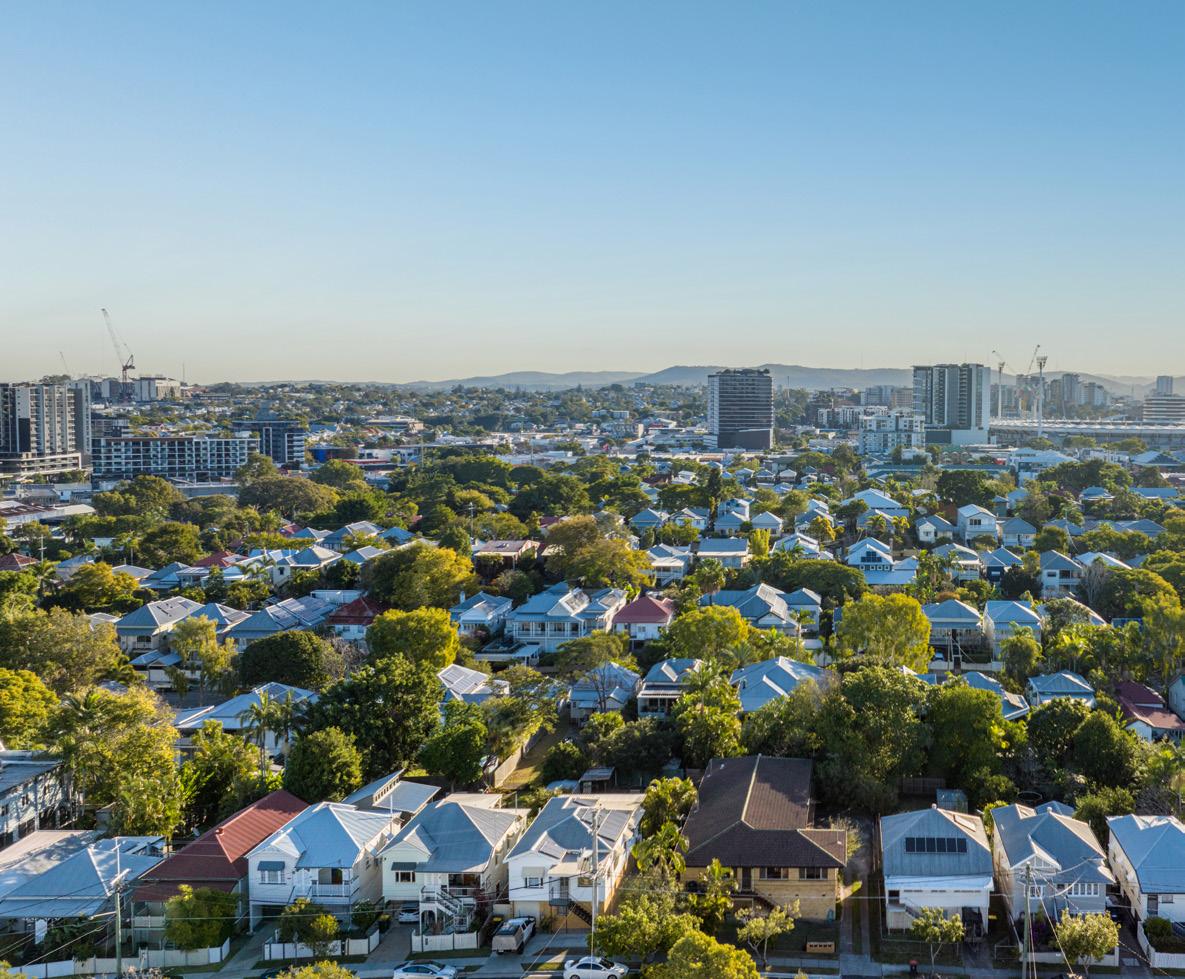
W HAT’S HAPPENING IN A u STRA l IA’S POST-PANDEMIC PROPERT y MARKET?

The pandemic sparked one of the most dramatic property booms in Australia’s history. Interest rates plummeted, regional migration surged, and FOMO-fuelled bidding wars became the norm.
But in 2025, the mood has changed. The headlines may no longer shout “record-breaking growth,” but that doesn’t mean the market has crashed. Instead, we’re seeing a shift, from boom to balance.
We take a closer look at what’s really happening in the post-pandemic property market, what’s driving the changes, and how buyers and sellers can adapt.
THE MARKET ISN’T CRASHING – IT’S MATURING
After two years of intense growth (2020–2022), 2023 brought higher
interest rates and cautious consumer sentiment. But rather than collapsing, the market responded with resilience.
Now in 2025, property price growth is more subdued but stable, particularly in metro areas and well-located lifestyle regions. According to CoreLogic, house prices across Australia rose modestly in early 2025, with Brisbane, Adelaide, and Perth still showing positive momentum.
In short:
• The days of 20%+ annual gains are behind us.

• Bu t we’re not heading for a downturn, just a healthier, more sustainable trajectory.
WHAT’S DRIVING THIS NEW PHASE OF THE MARKET?
Several factors are influencing Australia’s “normalisation” phase: Interest Rates
Rising interest rates have changed borrowing capacity across the board. Buyers are more selective, and vendors must price accordingly. However, the RBA’s pause in rate hikes has restored a measure of confidence.
Tight Housing Supply
Even with tempered demand, the lack of new listings in many areas has kept prices competitive. Homeowners on low fixed-rate loans are delaying sales, contributing to the “lock-in effect.”
Population Growth Resurgence
International migration is rebounding, placing pressure on housing, particularly in capital cities. This is supporting rental price increases and long-term investor confidence.
Image: Devon Mackay on Unsplash
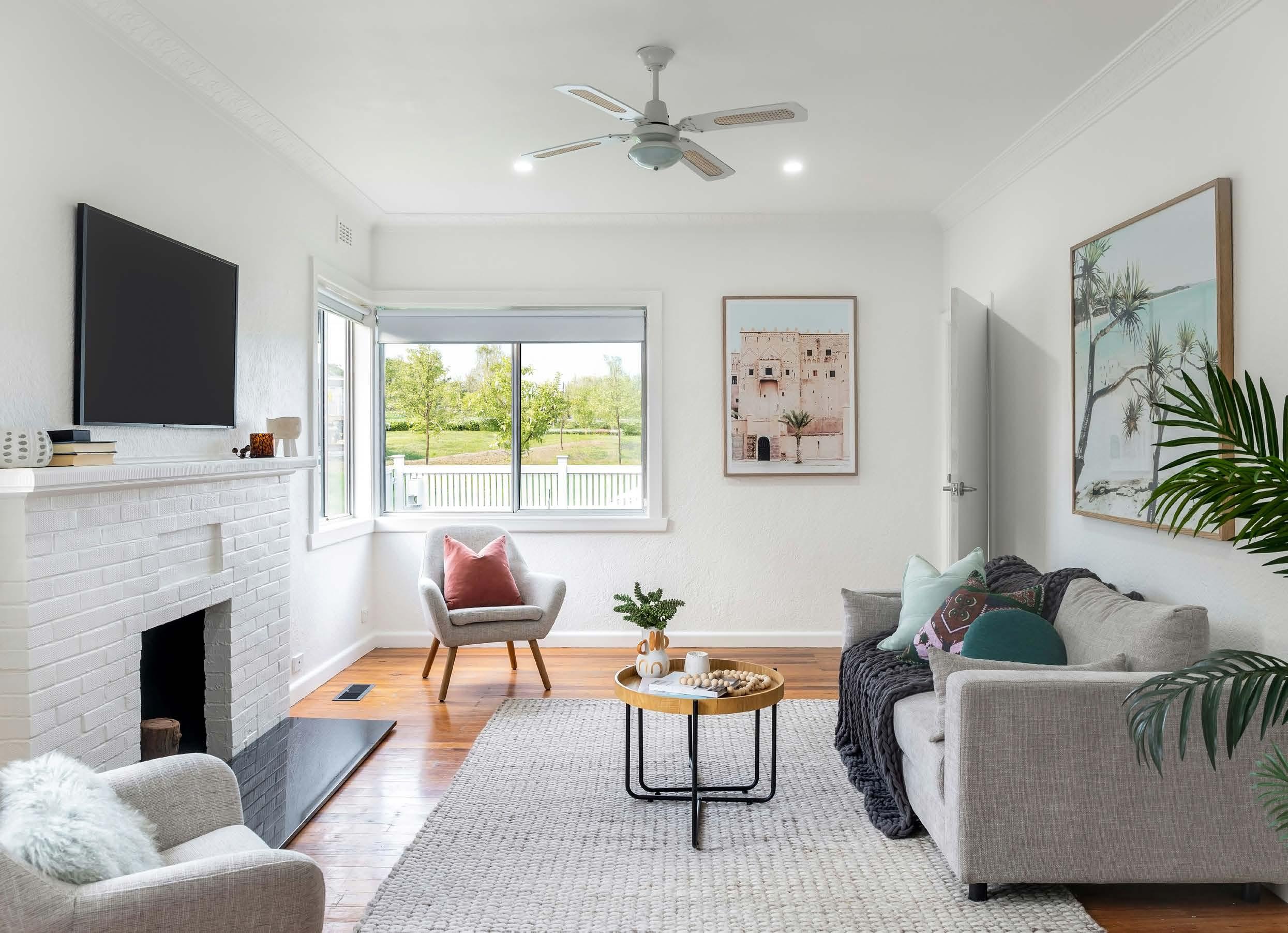
Govern ment Incentives and First-Home
Buyers
Ongoing grants and shared equity schemes are encouraging new market entrants, especially in outer metro and regional growth corridors.
THE SENTIMENT SHIFT: BUYERS AND SELLERS ARE THINKING DIFFERENTLY
Buyers Are More Strategic
Where buyers once rushed in, now they’re more considered. Many are looking beyond the headlines and focusing on long-term value, growth potential, and liveability. Suburbs with access to schools, transport and community amenities are standing out.
Sellers Must Be Market-Smart
Today’s sellers need to lean on pricing accuracy, prese ntation,
and marketing. With buyers more selective, homes that tick the boxes and are well-staged are still achieving strong results.
Investors Are Returning
As rents surge and vacancy rates tighten, investors are re-entering the market, particularly in units, townhouses, and dual-income dwellings.
WHAT THIS MEANS FOR YOU
Whether you’re buying, selling or investing, the post-pandemic market calls for a more informed, measured approach.
• For buyers , it’s a chance to purchase without the chaos, especially in markets where competition has cooled.
• For sellers , low stock levels mean that a well-prepared home can still command excellent interest.
• For investors, the fundamentals remain strong, especially in undersupplied areas with rising rental demand.
THE BOOM MAY BE OVER, BUT OPPORTUNITY ISN’T
The market may no longer be booming, but balance brings its own advantages. A slower, steadier real estate environment allows for smarter decisions, better outcomes, and long-term success.
If you understand the new rhythm of the market, 2025 could still be your year.
Thinking of making your next move in today’s evolving market?
Connect with your local Century 21 agent for strategic insights, up-to-date valuations, and real-time support to help you buy or sell with confidence.
Image: Mitchell Luo on Unsplash
W INTER WARMTH: HOW TO l Ay ER SOFT F u RNISHINGS FOR MAXIM u M COSINESS
When the temperature drops, few things feel better than stepping into a warm, welcoming home.
The good news? You don’t need a renovation to create that cosy winter vibe. Layering soft furnishings, like plush throws, textured cushions, and warming rugs, is a simple yet powerful way to elevate your home’s comfort and style during the cooler months. Whether you’re styling a beachside apartment in Bondi, a character home in Hobart, or a suburban living room in Adelaide, these easy updates will help you create a cosy, inviting space that feels just right for winter.
Here’s how to layer like a pro and turn your home into a seasonal sanctuary.
1. START FROM THE GROUND UP WITH RUGS
Rugs are the unsung heroes of winter styling. They anchor your room, soften hard surfaces, and add much-needed insulation underfoot.
Try This:
• Choose thick, high-pile rugs or natural fibres like wool for added warmth.
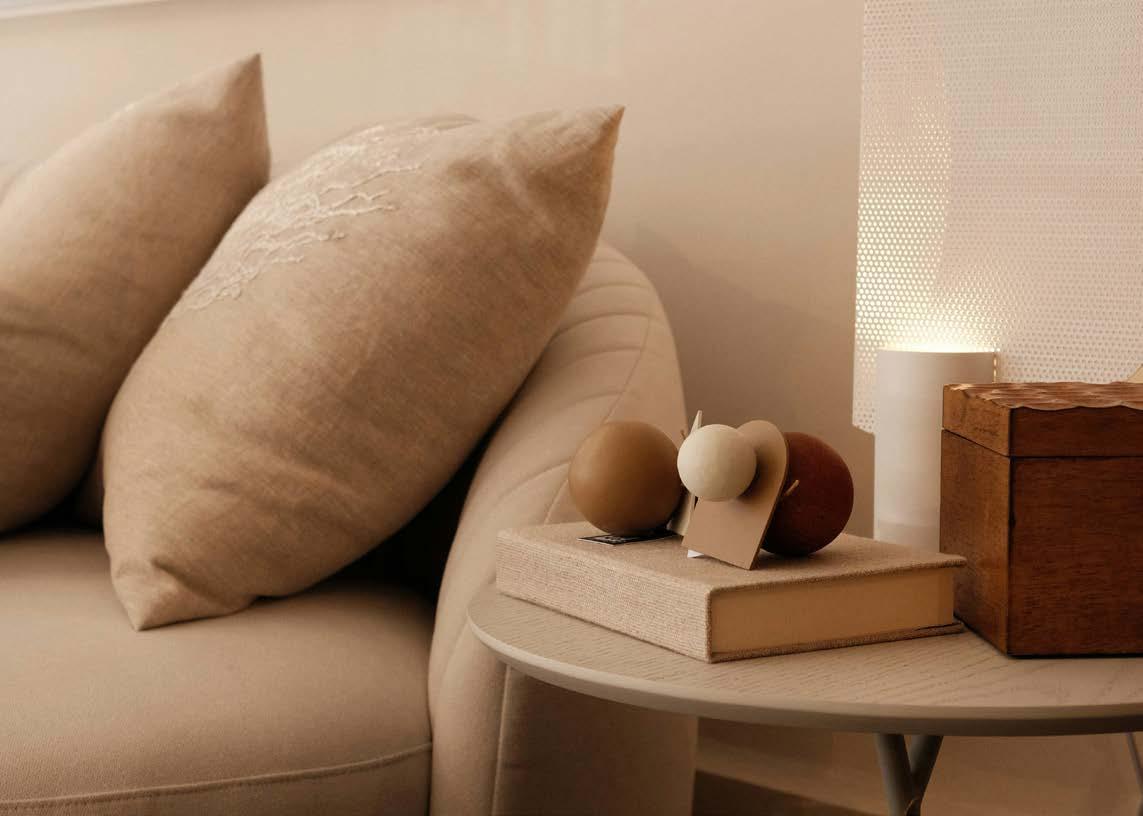
In open-plan are as, layer smaller textured rugs over a large, neutral base rug to define intimate zones.
Don’t forget the bedroom, a plush rug beside the bed makes early mornings feel a little less chilly.
2. LAYER THROWS AND BLANKETS FOR INSTANT WARMTH
Throws are one of the easiest ways to inject warmth, texture, and colour into your space. Whether draped over a sofa, armchair or bed, they add visual softness and seasonal flair.
Styling Tips:
• Drape throws loosely over the back of your lounge or armchair for a relaxed, lived-in look.
• Combine different materials, think chunky knits, faux fur and brushed cotton – for added interest.
• Store extra blankets in woven baskets or lean ladder racks for both function and style.
3. MIX AND MATCH CUSHIONS FOR TEXTURE AND DEPTH
Cushions are your go-to for layering and personalising a space.
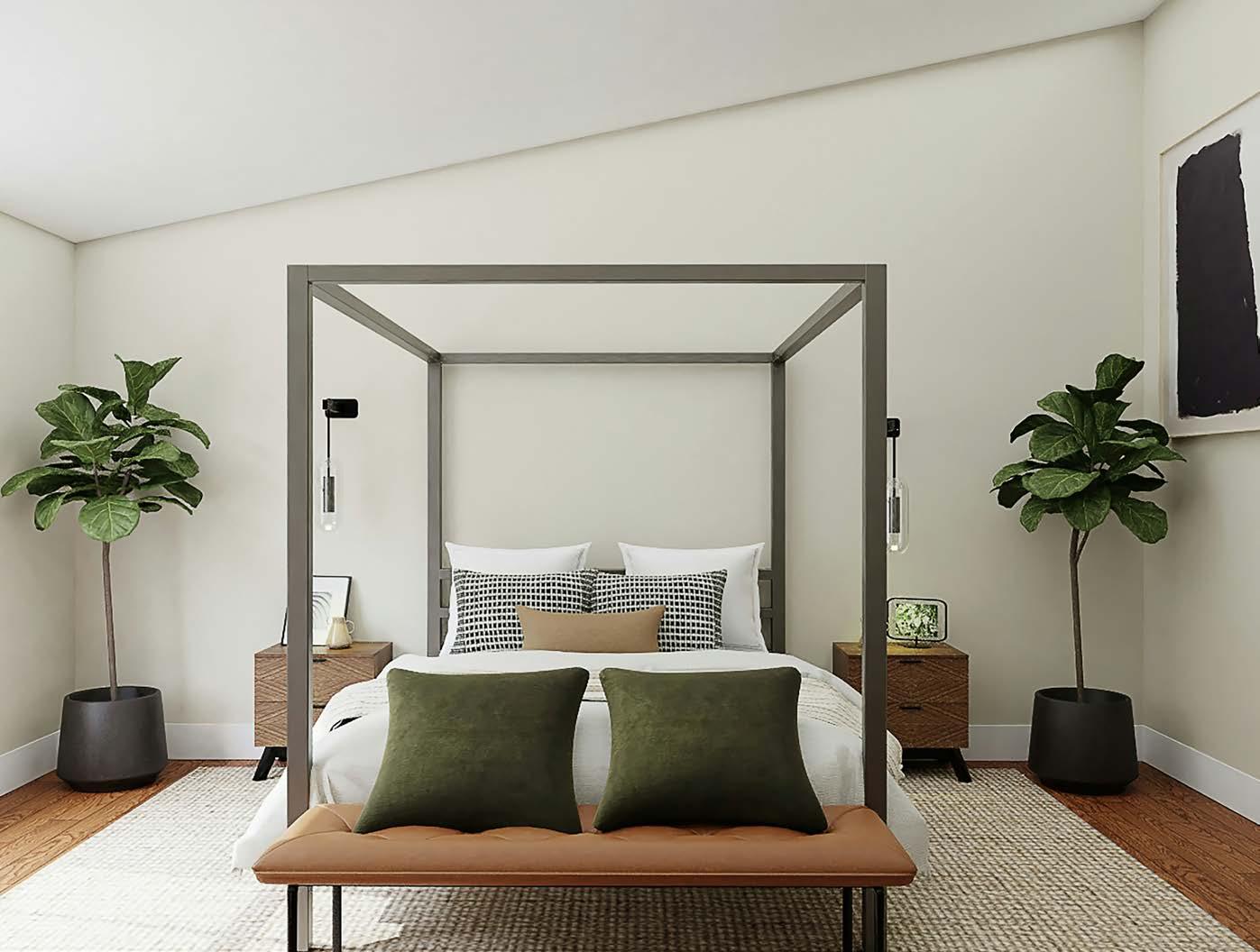
Image: Caroline Badran on Unsplash
Image: Spacejoy on Unsplash
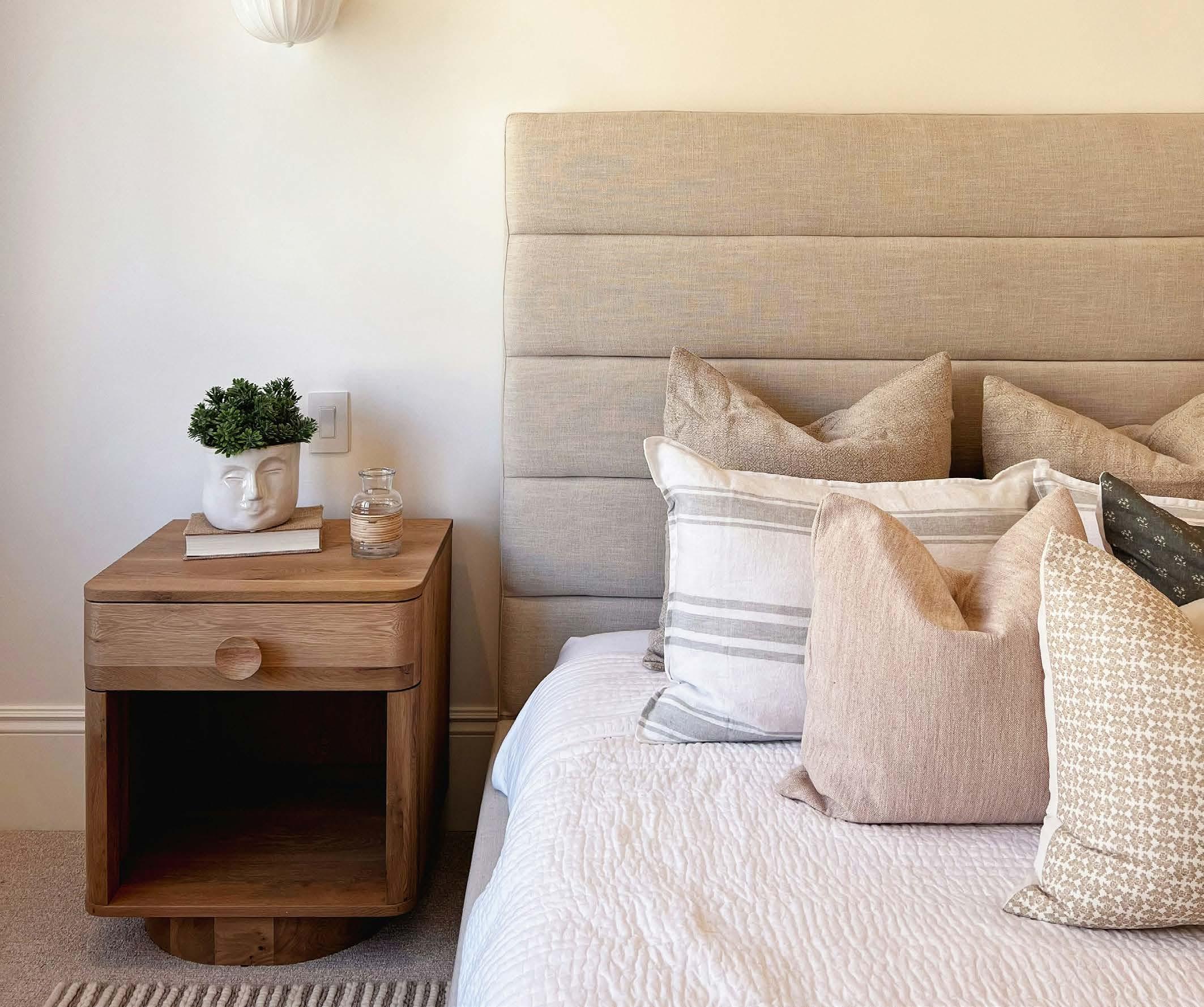
They offer an opportu nity to mix textures, play with colour, and add softness in all the right places.
Quick Tips:
• Mix sizes and shapes: use European pillows, classic squares, and lumbar cushions together.
• Choose tactile fabrics like velvet, wool, boucle and linen.
• Embrace a winter palette, deep forest green, burnt terracotta, mustard, and warm neutrals all work beautifully.
4. BALANCE IT ALL WITH INTENTIONAL STYLING
Layering is all about balance, enough to feel plush and inviting, but not overcrowded. Aim to
mix textures and tones within a complementary colour palette for a look that feels cohesive and calm.
Finishing Touches:
• Add a weighted blanket on the couch or bed for comfort and style.
• Use ottomans or storage baskets to keep spare throws easily accessible.
• Bring in soft lighting with warm-toned lamps or scented candles to create a cosy glow.
Key Takeaway: Warmth Meets Style, Without the Renovation
Layering soft furnishings is one of the simplest ways to create a warm and s tylish home during winter.
With just a few thoughtful touches, you can transform any room into a cosy retreat, perfect for curling up on chilly nights or welcoming guests with comfort and charm.
Need help preparing your home for winter or getting it sale-ready? Your local Century 21 agent can offer trusted advice on styling, staging, and presenting your property to suit the season.
Image: Mk. s on Unsplash
Q uEENS l AND INDEPENDENT JOINS CENT u Ry 21

Century 21 Australia has welcomed one of Moreton Bay's top-performing real estate businesses, Regan & Co, into its growing national network.
Led by respected local principals Trent and Kal Regan, the team has officially joined Century 21 and rebranded as Century 21 Aspire Group, with offices in Narangba and North Lakes in the heart of the Moreton Bay region – Queensland's third-largest local government area.
Mr Regan brings nearly 20 years of real estate experience to the network, while Kal Regan, one of Queensland's few licensed female auctioneers, has achieved notable success in a traditionally male-dominated field. Their office has consistently ranked among the region's highest performers, driven by a strong people-first approach and a deep understanding of the evolving local market.
"WE'VE
ALWAYS BELIEVED THAT WORKING WITH GREAT PEOPLE IS THE FOUNDATION OF SUSTAINABLE GROWTH,"
SAID MR REGAN.
"I wanted to partner with a franchise that genuinely supports its agents and shares our people-first philosophy. Century 21 stood out not just for these
values, but for the strength and reach of its international brand."
Mr Regan said the move comes amid shifting buyer trends in the region, with interstate and overseas interest playing a heightened role in the market.
"In the past few years, we've seen a major increase in enquiries from interstate and overseas, particularly India. It became clear that aligning with a national and globally recognised brand would help us better achieve our business goals," he said.
The team has recently appointed an International Liaison Manager to help manage rising demand from international buyers. Mr Regan says Century 21's global reach – particularly in Asia – was a key factor in his decision to make the transition.
"Charles Tarbey's recent acquisition of Century 21 India and the UAE gives us an incredible edge. Our listings now have direct exposure to those markets, and we can offer foreign buyers reassurance through Century 21's presence in their home countries. That simply wasn't possible before."
Century 21 Australia Chairman and Owner, Charles Tarbey, said the partnership marks a significant milestone for the brand's Queensland growth.
"TRENT BRINGS A STRATEGIC MINDSET, A STRONG LOCAL REPUTATION, AND A CLEAR VISION FOR EXPANSION. HIS BACKGROUND AS AN AIRCRAFT ENGINEER MEANS HE'S EXCEPTIONALLY FORWARD-THINKING WHEN IT COMES TO SYSTEMS AND TECHNOLOGY," SAID MR TARBEY.
"We're proud to welcome Trent and his team to the Century 21 family and are excited to support their next phase of growth across Queensland."
Mr Regan has plans to expand further in the region, with additional office locations on the horizon as the right agent talent is secured.
Century 21 is a global real estate leader with nearly 130,000 independent sales professionals across 79 countries. It is the largest residential real estate organisation in the Asi a Pacific region.





